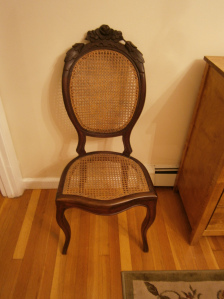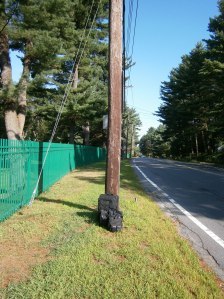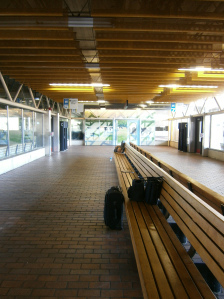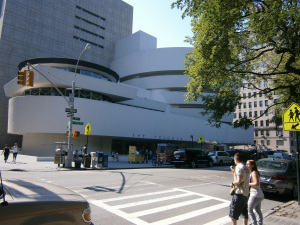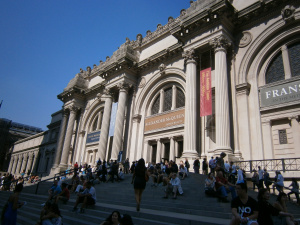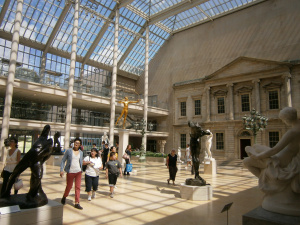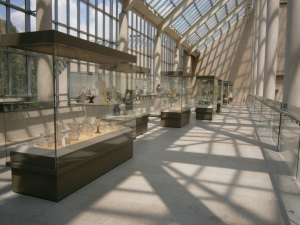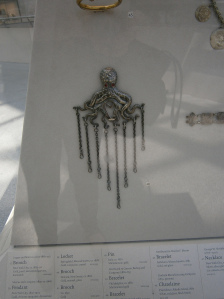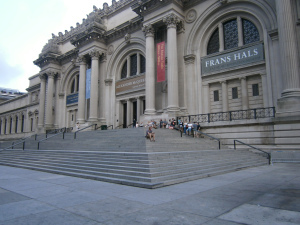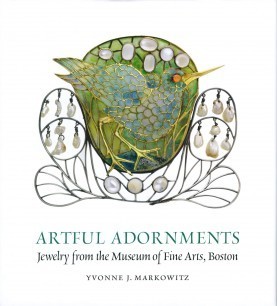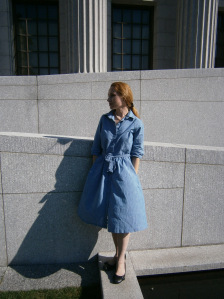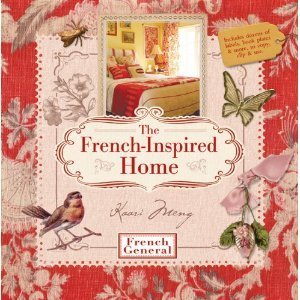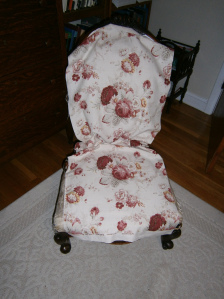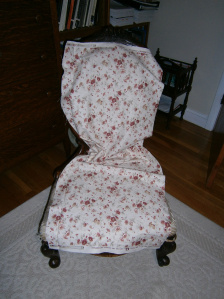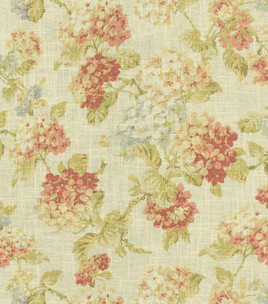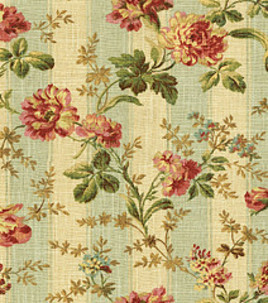Theodora Goss's Blog, page 52
August 16, 2011
Catching Up Again
I'm very tired.
I know I haven't been as good at keeping up with this blog as I usually am, this month. There are places where I've skipped up to three days in a row. This is a difficult month for me, because there's so much to do. So many things due at the end of the month. (Do, due. Yes, I did that deliberately.)
Yesterday I flew back from Asheville, after a wonderful weekend spent walking around the city, eating some of the best food I've ever eaten, and critiquing with Nathan and Alexa. I'll write more about that separately. This is just a short post to say hello again. Now that I'm home for the rest of the month, I'm going to try to catch up.
How am I? Just very tired, as I wrote above. This month, I have three things to finish: my dissertation, a Fookroots column, and a short story. The short story is almost done. I wrote it on the bus home from New York, revised it in Asheville, and will print it out and revise it again here. And then I'll submit it to the magazine that asked for it. We'll see if the magazine takes it, or if I'll need to send it elsewhere afterward. The Folkroots column is my next task. And of course, all along, I'll be working on the dissertation. It's almost done: I just need to add some footnotes. And then my readers will read it one more time, and we'll see what happens – final revisions and then approval, I hope.
I never wrote about the Alexander McQueen exhibit, and I want to write about Asheville and critiquing, so there are some specific blog posts coming. I also want to write about Stephen King's book on writing, which I ended up liking quite a lot.
So that's it, those are all the things I need to catch up on. My agenda. I'm back, I'll try to get back to blogging more regularly than I've been able to so far this month.
And I'll try to get some rest. I know, I just recently wrote about depression. I'm all right, but I need to take care of myself, and that's what I'll try to do today and for the rest of the month. So I can start the school year not quite so tired, more myself than I've been lately.








August 11, 2011
Saying Thanks
Status report: Today I finished the draft of my introduction that I've been working on. I still need to add some footnotes. But then it will go to my readers. And then we'll revise it some more, and then it will be done. All I have to do, otherwise, is add some footnotes to Chapter 2. And then the whole dissertation goes together, hopefully by September 1st. I actually feel quite good about this. I feel, perhaps for the first time, as though I really am close.
And I want to thank you all for being so wonderful. For all the people who read yesterday's post, and the people who commented, and who encouraged me on Facebook. And the people who told me it gets better, and how it gets better. And even sent me a poem. I honestly don't think I could do it without feeling as though there were people out there who cared and who had gone through some of the same things. I think there are a lot of us who go through these sorts of tough times. I do think it's more difficult for artists, too. Although artists also have something that other people don't have. We have our art. When I sit down to write a story, I go someplace else. I love that, the feeling that I am completely absorbed in the story I'm telling. That I'm a traveler in space and time.
Tonight I'm packing, because once again I will be out of town for the weekend, in Asheville, where I will be critiquing our YA novel chapters with Alexa and Nathan. I think traveling is good for me. It's good to get out of town, breathe the air of another place. And I can't wait to wander around the antiques stores again, and go to Malaprop's. It's been years since I've been to Asheville, and it's quite literally one of my favorite towns, the one I based Ashton, North Carolina on in "The Wings of Meister Wilhelm" and "Lessons with Miss Gray." I want to set a whole suite of stories in Ashton and publish them as a book. Well, someday. Right now I have so many other things to do.
Like pack, and make my lunch for the airplane, which will include chocolate-covered pretzels. My usual traveling treat, that I don't get any other time.
But I will leave you with one pretty image:
That's a chair I found at Goodwill, and to be honest it's a little battered. But doesn't it have nice lines? I had to buy it and bring it home, simply to rescue it from a place where it so clearly did not belong. And it goes with the upholstered chair I bought recently.
That's all I have today, just thanks and a pretty picture and I'll write from Asheville tomorrow!








August 10, 2011
On Depression
Status report: I've finished Chapters 1 and 3. Chapter 2 needs some more footnotes, for which I'll need to read some sources. But since I've come back from New York, I've been working on the introduction. I have about twenty pages written, meaning most of it. Now I just need to add a section on how my argument fits into scholarship on the Gothic. So I'm reading some books, trying to get that section written.
Once I have the introduction and those footnotes to Chapter 2, the dissertation will be done. And then it will go to the committee.
I know I've skipped a few days of posting. I'm so tired nowadays that I get to the end of a day and I just don't have the energy. Part of that is depression, although right now it's a depression I'm working through, because I know the only way to deal with it is to go through. The only way is forward.
I don't know how people with chronic depression deal with it. They have my utmost admiration and respect, because even the few times I've had to deal with it, it's been incredibly difficult. For me, it's a condition that happens when I'm under extreme stress, the way I've been this year. Finishing the dissertation had been difficult, but it's been more than that – physically difficult circumstances, being out of the city with a long commute, and all sorts of other things. Just a lot of things all piled on top of each other.
So what does it feel like? Sort of like living in darkness. And when you're out of it but it's still there, it feels like being followed around by a dark cloud. I read in an article that J.K. Rowling was depressed while she was writing the first Harry Potter novel. The Dementors are representations of that depression. That makes sense, doesn't it? They suck out all the light and hope.
For me, right now, the most difficult part is the tiredness. I deal with it by doing what I have to do, but all sorts of other things are left undone. There are emails I haven't had a chance to respond to, for example. But the introduction is getting written. That's the most important thing, right now. And I try to give myself permission to rest. And I try to eat well. And I buy books.
I will write about the Alexander McQueen exhibit, and I will try to get back to posting daily. But just so you know: I'm going to have a difficult month, so bear with me. I'll do what I can.
And I think I'm going to try to write about the depression at least a little, because I know I'm not the only one who deals with it. And writing about it might help other people. I do remember what it's like to be out of it, and that's my natural state: calm, interested in and excited about life. Happy. That's what I'm usually like, and this is an anomaly for me. But it does happen, and when it does, I just need to deal with it.
On the way back from New York, I had two seats to myself. The bus was driving through countryside, so I saw trees all around. It was quiet and calm. And I suddenly realized that I felt exactly right, exactly myself – the person I was meant to be, the person I think I've been trying to become this year. And you know what I did? I wrote a story. I still need to type it up, but I'm going to do that by the end of the month. And then I'll send it to a magazine that requested a story from me. I remember what that felt like, sitting on the bus writing, being myself. I want to get back to that. The only way is through . . .








August 6, 2011
New York Adventure
It's been a long, tiring day, so I'm just going to post a few pictures from this weekend.
I took two buses to get to New York. I wanted to take pictures of the three bus stops, but I only ended up taking pictures of two. Here is the first one, where I'm waiting for the bus to the station. It looks so rural, doesn't it?
And here is the second one, where I actually got on the bus to New York.
The third one would have been Penn Station, but I was so absorbed in finding my way to the subway that I completely forgot. Oh well. You can see that I was moving from the rural to the urban. And just so you get a sense of the urban, here you go:
That's from across the reservoir in Central Park. I took it on Friday morning. I had just taken the cross-town bus and was walking down to the Met, where I was going to meet Helen Pilinovski, who is a wonderful academic and scholar. We were going to the Alexander McQueen exhibit. On my way, I passed the Gugenheim, which was looking lovely as usual.
Well, that day didn't work out quite as planned. Although we arrived at 10 o'clock, the line was incredibly long. It would have been a four to five hour wait to get into the exhibit. You can see how busy the museum was that morning:
So instead of going to the exhibit, we went to the American wing to see some of my favorite objects. This is one of my favorite parts of the Met.
I particularly like the long, light-filled balconies, where there are all sorts of vases and ornaments in glass cases.
Including ornaments worn by late nineteenth-century Cthulhu worshipers.
And then we went thrift shopping, and then we met Ellen Kushner at a bookstore filled with first editions, including of that odd book, Christina Rossetti's Speaking Likenesses. And then I came back to rest. I had walked all over New York, and I was very tired.
There was no exhibit for us that day, but we were determined to see the Alexander McQueen exhibit, and you can't keep two resourceful women from a museum exhibit they have decided to see. We decided to split the cost of a museum membership and come back the next morning, when there would be extended member hours. So there we were, bright and early, in line at 7 o'clock. Here is what the museum looked like this morning, when I arrived:
Of course, we lined up at the members' entrance, where we were third in line. They let us in at 8 o'clock, and we wandered around the exhibit for an hour. Then we went for brunch, and this afternoon I had coffee with Ellen Datlow, who is one of my favorite editors. There were so many people I wanted to see in New York, and I only got to see a few of them. But I'll be back soon.
I'm not going to describe the exhibit tonight. I'm going to try to write about it tomorrow. It was gorgeous and overwhelming, and I want to do it justice. But tonight you do get at least a few pictures of New York. It's been wonderful being here.








August 3, 2011
Going to New York
Status report: Today, I worked on the introduction. It's going all right. By the time I get to sleep tonight, I should have about ten pages written, which is theoretically half its length. Theoretically. And then I'll take a break for four days, while I'm in New York. I won't be able to concentrate on academic writing there, and I won't have the sources I need with me anyway. So instead, I'll work on the YA novel chapters I need to get to Nathan and Alexa by Sunday, and then on my Folkroots column. I'll also take some books to read: Stephen King's On Writing and Michael Chabon's Reading and Writing, which is a collection of essays that I'm really enjoying.
I grew up around Washington, D.C., and we used to go to New York almost every year, usually for the opera. I still remember my mother taking us to see Madam Butterfly, which has to be the most boring opera in the world. My brother slept through most of it. If you want to take children to see opera, take them to Carmen. In fact, take anyone who has never seen an opera before to Carmen. It's the one opera everyone can learn opera on, partly because it's so easy to follow. It's all plot. I still love the Placido Domingo version.
As you read the rest of this blog post, you can listen to "Près des Remparts de Séville." This is where Carmen first meets Don José. I love how defiant and seductive Carmen is in this version. Poor Don José is a gonner from the first note.

It was difficult, going to the New York of those days, for a hypersensitive child. I experienced the city as overwhelming. When I moved there after law school, I went into the city to work, but I lived outside the city in Larchmont, and often on the weekends I went out to the countryside, to farms or apple orchards, or small towns with antiques stores. I still don't think I could live in New York. But now, I love to visit. The city feels much more familiar, more like a home, the way cities like Budapest and Paris have always felt to me. I love to go into the little grocery stores, or wander around the streets and see the small shops, or walk through Central Park. And I love the museums.
Tomorrow, I'm taking the bus down. It will cost me $35 round trip, which is one of the advantages of living in Boston. And then on Friday, I'll go to the MET and see the Alexander McQueen exhibit. While there, I'll stay with friends, and meet friends for coffee or dinner. And I'll have time to work on writing. It will be a quiet, cozy sort of visit, for New York. I started this summer knowing I would have a lot of work to do, but also wanting to visit three places: San Francisco for the Isabelle de Borchgrave exhibit, New York for the Alexander McQueen exhibit, and Asheville for the antiques stores. The only one of those trips I wasn't able to make was the trip to San Francisco: the exhibit was too close to the school year, and I had too much to do then. But I think I'm doing pretty well. I also wanted to go to the seashore, and I didn't get to do that. But next summer I will definitely go down to Nag's Head, North Carolina for a writing week or two. I have my cottage all picked out.
I still have to pack, but that's easy, for New York: jeans and black shirts. Maybe a black skirt in case I go somewhere fancy.
I grew up traveling to all sorts of interesting places. I hope I can do that more in the future. That's one of the things I'm working for, this summer. Which is why after I finish this blog post, I will go back to that introduction, and keep working at it until it's in proper shape.








August 2, 2011
YA Challenge Update
Status report: I'm working on the introduction. Today was a long day, and I didn't get much writing done. But tomorrow I'm going to spend all day working on it. The first section is done, and I want to write the second and third sections, if possible. And then, on Thursday, I'm taking the bus to New York. I'm going to take my computer with me, not to work on the dissertation, but to work on the YA novel and my Folkroots column. I need to have enough of the YA novel revised so I can get something to Alexa and Nathan by this Sunday, for the workshop next weekend. (This weekend in New York, next weekend in Asheville. I love traveling.)
Nathan is also working on his YA novel, and Alexa has recently posted about her research: "YA Novel Challenge Update 3 – Research in the Real World." The post starts,
"I spent four hours today learning about guns. Not reading books about guns or gleaning information from episodes of Mythbusters, but buying ammo, having a crash course in gun safety, and then shooting a Glock 9mm and a .22 caliber revolver in the midst of the heat and smoke at the local firing range.
"What was my bleeding-heart liberal ass doing at a firing range? Research."
That might actually be good research for me as well, at some point. It's been years since I've shot a gun, although when I was in college, I went to a firing range and learned to shoot a .22 pistol and a 9mm Glock. And later, on random occasions down in Virginia, we would go into the pasture, set up soda cans, and shoot a .22 revolver, and sometimes a .45 caliber M1911A that belonged to a friend, and once a 7.65 Argentine mauser made in 1910. I preferred the .22s – when you're 5'4″ and 120 pounds, kickback can be fierce. Like Alexa, I didn't get any particular pleasure out of firing a gun. It was just something to experience. I would like to learn fencing, though. In my novel, Sherlock Holmes has fencing foils in his umbrella stand. Can I put the fending foils in the umbrella stand and not use them by the end of the novel?
I've been having a specific, crucial problem with my YA novel: voice. I wrote several chapters, and they just felt flat and stale. And I thought, whose voice am I writing in? Whose perspective am I writing from? While I revised my dissertation chapters, that question stayed with me, pestering me. And one night I thought, this novel isn't really about the central mystery, is it? It's really about monstrous girls. So I wrote a prologue about monsters. In that prologue, I found my voice. It was the voice of Catherine, who had also narrated "The Mad Scientist's Daughter." I know, it sounds obvious that I should write in the same voice for the novel version, but it wasn't obvious to me. I was deliberately writing from a third person perspective, no particular person narrating, because I didn't want it to be Catherine's story. I wanted it to start much earlier than she comes into the narrative. But when I made Catherine the retrospective narrator, suddenly the story had attitude. It had a point of view it had been lacking. And I realized that I could go through the chapters, rewrite them from that point of view, and make them live. ("It's alive!" I would have shouted in triumph, but it was about 2 a.m. at that point.)
I'm going to give you that prologue. I'm not going to post any other excerpts from the novel: this is all you get. And I don't know if it will actually end up in the final draft. But it was, at least, a way for me to get into the heart of the novel, to find its voice.
Prologue: How to Be a Monster
I. Be Frightening
Justine is the most frightening of us, although Catherine is the most deadly.
When Justine walks down the street, people stare at her. Sometimes they stumble back before recovering themselves. Then, they try to ignore her, lowering their eyes or, if they are women, hiding behind parasols. And yet, other than her height, she looks perfectly ordinary: a girl with a long, pale face and brown hair in a braid around her head. We've tried persuading her to wear a more modern style, but she refuses.
She is the most gentle of us, the one most likely to carry a spider outside instead of crushing it under her boot heel. But she is seven feet tall, and that frightens people. So they stare, and stumble back. Boys have run after her, taunting her. They have even thrown rocks. It's not a good idea to throw rocks at Justine. She's gentle but strong. You don't want to feel her grip on your shirt collar, hear her asking, as though genuinely curious, "Why would you do that?"
But Catherine is the one who can tear your throat out.
II. Be Beautiful
Mary says we are all beautiful, in our own way. Hers is a conventionally English way: blue eyes, and the pink and white complexion that the English are famous for, like old roses. If you see her walking in the park, you will immediately think: There goes a lady. Diana, as dark as a gypsy, with unruly ringlets of black hair tumbling down her back, could never be mistaken for a lady, no matter how demurely we dress her. But when she flashes her eyes and tosses her head, few men can resist. Which is useful, when we need her to pick pockets.
Even Catherine is attractive, when her scars are covered with paint.
But the most beautiful of us is undoubtedly Beatrice. Imagine an alabaster statue come to life, as though Galatea has stepped off her pedestal and put on modern clothes. With her black hair looped up, she looks like a Greek goddess. And when she speaks to you in her lilting Italian voice, you want to stand still and listen as long as she continues. Of course, if you listen too long, you will begin to feel faint. It's the poison, entering your system. Eventually, paralysis will set in, and after that, death.
III. Be Clever
Mary is the cleverest of us. If we need to steal the Koh-i-Noor diamond or kidnap the Prime Minister, Mary is the one who can formulate a plan. Although she would never allow us to do such things, no matter how Diana pesters. She's so moral.
Beatrice has contributed seven papers to the Journal of the Horticultural Society. She is always making some discovery or other about the plants she grows in the conservatory. She sells some of the potions she makes to the Medical College, which helps pay our expenses. Justine can quote philosophy and poetry until you fall asleep listening to her. Catherine has studied with T.H. Huxley himself.
And Diana knows the criminal underworld of London as well as Professor Moriarity.
IV. Be Distinctive
We are all different. Beatrice with her luminous beauty, as though she were lit from within, and her academic credentials (she has a degree from the University of Padua). Justine, like a tall, sad lily, reciting "The Lady of Shalott." Diana, who swears like sailor and does a cancan in the drawing room. Mary, rational, orderly, saying to us, "Girls, we've been summoned to Buckingham Palace. Diana, do you think this time you can refrain from stealing anything?"
And I, Catherine, curling on the sofa like a cat, because I dislike this cold, wet England of yours! Writing this story for you, so you can understand how we came together and what we did – we monsters.








August 1, 2011
Death of an Artist
Status report: I'm so tired that I'm having a hard time even keeping up with this blog. Chapter 2 is done, although I still need to add some critical sources. But I need to go to the library tomorrow, and some are coming through interlibrary loans. Once I get those, I'll be able to add them. I finished Chapter 2 on Sunday. Today, I started writing the introduction. It should only be about twenty pages (double spaced), but to make it more manageable, I've divided it into five sections (at least for my own purposes): a section on the Great Exhibition of 1851 and the freak shows that were happening all over England around that time, a section that explains my argument, a section on the critical history, an outline of how I will present my argument (basically, what the various chapters say), and finally the implications of my argument and what I've left out. By the time I go to sleep, I will have finished the first section on the Great Exhibition and freak shows.
Sometimes I feel as though I'm too tired, as though I can't do it anymore. And somehow I make myself sit down in front of the computer and keep going. But it's not easy. When it's done, I don't know if I'll ever want to look at this material again. At least, I know I won't be able to look at it for a while. And in the meantime, there are so many other things I need to do, even small things like answer emails, that I constantly feel overwhelmed. And more often than now, nowadays, I just can't do it all. So the emails pile up, and the to-do list grows, and I just can't do it. It's all too much.
As I write this, I'm listening to Amy Winehouse's "Back to Black." Before she died, I didn't know much about Winehouse. I casually assumed that she was like all the other pop stars I don't listen to who are always featured in the tabloids. I'm not sure why I started becoming interested in her after her death. I think I just wanted to know what her music sounded like, why there was such a to-do. And that's when I realized she wasn't one of those pop stars, that she was actually something quite special. A genuine artist.
If you haven't listened to her music, here is the song I'm listening to as I write this, and that I've been listening to quite often in the past week:

We live in a world where so much is crude and stupid. Including many of the reactions to her death – that it was predicable and somehow deserved. That there are more important things to mourn. But I think the death of an artist is always something to mourn. Artists are strange people, and many of them aren't particularly good at life. But they produce works that form our cultural dreams. How poor we would be without Michaelangelo's David, or Ulysses. The world would be less interesting, less complex. We would have less to think about, less to wonder at. My world would be less beautiful without "Back to Black," now that I've heard it.
It's always sad when we lose an artist. We're always justified in mourning, no matter what else is happening in the world. And what we think of the life, how we judge it, ultimately doesn't matter, because we're not left with the life. What we're left with is the art. Cy Twombly died recently, as did Lucien Freud. I didn't particularly like Twombly's art. I could appreciate the power of Freud's. They had a lifetime to develop, to give us their best, and I'm glad of that. It's sad that Winehouse didn't.








July 30, 2011
Jewels and Gems
Status report: Yesterday, I spent the entire day reading academic articles. Today, I couldn't take it anymore. I had to get out. So I went to the Museum of Fine Arts for a new exhibit, Jewels, Gems, and Treasures: Ancient to Modern. It was a small exhibit, a single room. As you walked around, you could see the history of jewelry-making, from ancient Egypt to modern designers. The most interesting period was of course the nineteenth century. I saw a set of earrings that was made of taxidermed hummingbirds. It was creepy but also beautiful, as Victoriana tends to be. The most beautiful pieces were from the end of the century, when masters like René Lalique were designing.
I tried to take photographs, but the room was dark, and the jewelry was lit from above and behind so the gems would sparkle. Of course I was not allowed to use flash in the museum. So it was almost impossible to make photograph turn out well. But I will show you the most beautiful piece in the exhibit, which appears on the catalog:
It's a silver brooch with a marsh bird on it, in enamel. The original was just as stunning as the picture. The exhibit presented a good argument for looking at jewlery – at least some jewlery – as wearable art.
It was good to get out, to remind myself that there are more things in the world than this room, my work. Sometimes it feels as though, day by day, I'm becoming more despondent, more tired. And I need to finish what I'm doing. I can't get stuck in the slough of despond, not now. But some days are difficult, especially when I have to read articles that are deadly dull. For hours at a time.
So I'm glad I went to the museum. Here I am, by the way, standing in front of the museum. In one of my new favorite dresses, which is comfortable and summery. In honor of the exhibit, I wore pearls.
I'm afraid that's all I have for you today. I'm very tired, and I'm trying to keep going, and some days are better than others. At least today I saw some beautiful things. They reminded me that I want to make beautiful things myself – things that are beautiful and true. I just need to get to the place where that's possible, because it can't happen when academic articles are jostling around in my head, you know?








July 28, 2011
Dreaming and Decorating
Status report: It's been a dreadful day. Would you like to know what I did for most of it? Well, I'm going to tell you. When I first wrote Chapter 2, I used the Penguin edition of The Picture of Dorian Gray. But the scholarly edition, the edition used by scholars in their research – what they call the authoritative version – is the Oxford Complete Works. So what I did today was go through the last section of Chapter 2, which is on Dorian Gray and "The Soul of Man under Socialism" (for which I had used the Harper & Row Complete Works), check all the quotations, and correct all page numbers in the parenthetical citations. Every single one. It took hours.
I keep telling myself that I'm learning valuable things in this process, but sometimes I'm so bored that I could sob into my decorative pillows, and sometimes I'm so bitter that I could kick the walls. And I'm starting to feel the way I felt when I was working as a corporate lawyer: as though I'm spending time that I could be spending doing so many other things – writing stories that people are actually going to read, for instance. I think my disenchantment with academic writing started the day I went to a seminar on publishing academic books and learned that selling 3,000 copies was considered a success – an academic best-seller. At that point, I had already published my short story collection, and it had sold well over 3,000 copies. And I thought, but I want people to read what I write. I don't want my work to sit in a library somewhere, where only graduate students consult it. I want to communicate.
So, as I mentioned, today was dreadful. Once my work was done, I had to do something. I didn't know what – it was already seven o'clock, and here I was in the suburbs, with nowhere to go. Stuck.
So I did the best I could. When I'm feeling desperate, I usually try to make or change something. So I went to the fabric store and bought a pillow insert, so I could make a pillow out of the fabric I bought yesterday. I don't have time to actually make it now, but at least I have everything I need, for when I have the time. Then, I went to the bookstore and bought three decorating books. These, specifically:
Somethings seems to have happened to decorating, and I think it's a good thing. It's an interest in a more casual, artistic, cottage style. That's the style I like best, using older pieces, making rooms beautiful, comfortable, filled with space and light. But also quirky, with individuality and character. Each of these books is about that style. I bought the French General book specifically because I like the French General aesthetic: it's actually a store in California that sells all sorts of things, including fabric designed by the owners. Here is the store's website.
So today I'm completely despondent, but at least tonight I'll have beautiful pictures to look at. And I'll think about what I want in the house I'm going to have, someday. That Witch's Cottage I've been wanting for so long, with the high, airy rooms, and the old wooden furniture, and the claw-foot tub. And the cat sitting in the window, while white gauze curtains blow in the breeze. (With an enormous garden, filled with roses and herbs, and a sundial, and a pond.) That's the sort of thing I need to keep me going, when I'm dealing with everything I'm dealing with now. That dream, and the knowledge that I'm working to make it a reality.








July 27, 2011
Choosing Patterns
This is going to be a short post, because I'm very tired.
Status report: By the time I go to sleep tonight, I will have finished the second section and half of the third section of Chapter 2. That means one more half-section to go. It will be the hardest half-section to revise, but I tell myself that it's only ten pages (singled spaced, not counting footnotes, but still). It's on The Picture of Dorian Gray and "The Soul of Man under Socialism," by Oscar Wilde.
Today, I revised and revised, and the only fun thing I did was take a half-hour to go to the fabric store and buy a half-yard of two fabric patterns. (I keep using the world half in this post. I think that's because I'm living a half-life.)
I thought that if I was going to invest in reupholstering a chair, I wanted to be absolutely sure I knew what it would look like. Buying half-yards of each pattern would allow me to put them on the chair itself, see them under the correct lighting. I actually didn't realize that lighting would make such a difference: they looked much brighter, brasher, under the lights in the fabric store. I liked them so much better when I had taken them home and draped them over the chair.
Tell me what you think. This one is Normandy Rose:
And this one is Fairhaven:
I think I like Normandy Rose best, for this particular chair. The nice thing about having half-yards is that I can use the fabric for making pillows. Not that I have time right now. But eventually I'll have time, and I'll be able to make pillows with roses and morning-glories on them. (Fairhaven actually has morning-glories on it, in colors that work with Normandy Rose). These particular patterns have been around for a long time, and I don't think they're going anywhere. And they work with all the other patterns I love – the colors talk to each other. Patterns should talk to each other, they should speak the same language; they should never actually match.
Like these:
Because, you know, I'm not Diana Vreeland:
While I'm working on my dissertation, I sometimes look at the Apartment Therapy blog to cheer myself up. That's where I saw the picture above, of Vreeland's famous red living room. And then, just as I had done with Coco Chanel, I started collecting quotations from her.
"You gotta have style. It helps you get up in the morning."
"The only real elegance is in the mind; if you've got that, the rest really comes from it."
"Elegance is innate. It has nothing to do with being well dressed. Elegance is refusal."
"The two greatest mannequins of the century were Gertrude Stein and Edith Sitwell – unquestionably. You just couldn't take a bad picture of those two old girls."
"The best thing about London is Paris."
"I loathe narcissism, but I approve of vanity."
"I'm terrible on facts. But I always have an idea. If you have an idea, you're well ahead."
"Without emotion there is no beauty."
"Never fear being vulgar, just boring."
"What do I think about the way most people dress? Most people are not something one thinks about."
That sounds rather narcissistic, doesn't it? But when you're an artist, you have to not think about most people – what they want, what they like. Unless you're the most commercial of artists, trying to please the public taste, not trying to do anything more than that. But if you have an individual vision, you need to concentrate on what you want to create. You need to ignore the public.
"I think your imagination is your reality."
I think I like Diana Vreeland. But this one is my absolute favorite:
"The idea of beauty was changing. If you had a bump on your nose, it made no difference so long as you had a marvellous body and a good carriage. You held your head high and were a beauty . . . You knew how to water-ski, and how to take a jet plane in the morning, arrive anywhere and be anyone when you got off."
If I could take a jet plane in the morning, I think I would get off in Paris . . .









